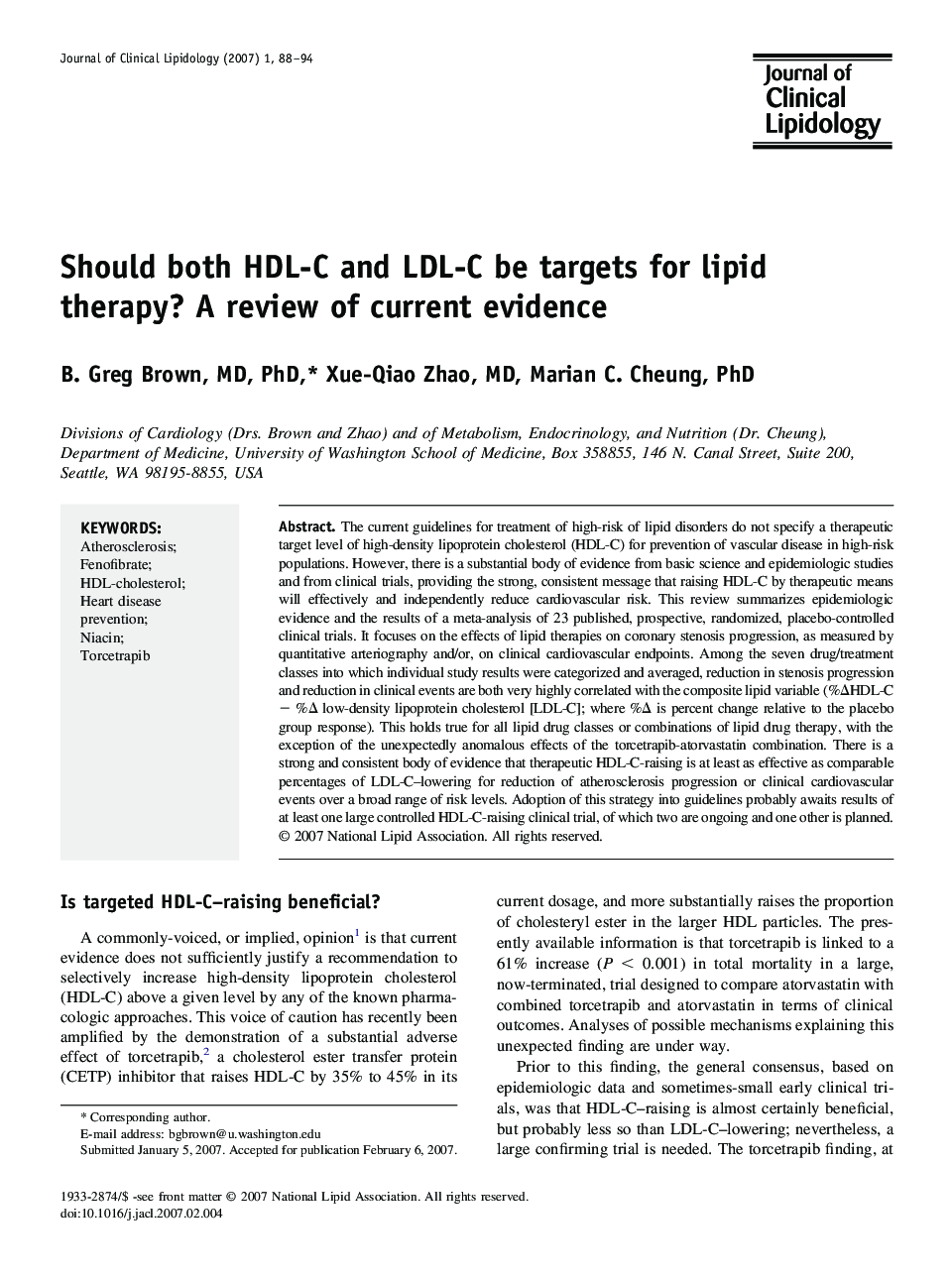| Article ID | Journal | Published Year | Pages | File Type |
|---|---|---|---|---|
| 2967135 | Journal of Clinical Lipidology | 2007 | 7 Pages |
The current guidelines for treatment of high-risk of lipid disorders do not specify a therapeutic target level of high-density lipoprotein cholesterol (HDL-C) for prevention of vascular disease in high-risk populations. However, there is a substantial body of evidence from basic science and epidemiologic studies and from clinical trials, providing the strong, consistent message that raising HDL-C by therapeutic means will effectively and independently reduce cardiovascular risk. This review summarizes epidemiologic evidence and the results of a meta-analysis of 23 published, prospective, randomized, placebo-controlled clinical trials. It focuses on the effects of lipid therapies on coronary stenosis progression, as measured by quantitative arteriography and/or, on clinical cardiovascular endpoints. Among the seven drug/treatment classes into which individual study results were categorized and averaged, reduction in stenosis progression and reduction in clinical events are both very highly correlated with the composite lipid variable (%ΔHDL-C − %Δ low-density lipoprotein cholesterol [LDL-C]; where %Δ is percent change relative to the placebo group response). This holds true for all lipid drug classes or combinations of lipid drug therapy, with the exception of the unexpectedly anomalous effects of the torcetrapib-atorvastatin combination. There is a strong and consistent body of evidence that therapeutic HDL-C-raising is at least as effective as comparable percentages of LDL-C–lowering for reduction of atherosclerosis progression or clinical cardiovascular events over a broad range of risk levels. Adoption of this strategy into guidelines probably awaits results of at least one large controlled HDL-C-raising clinical trial, of which two are ongoing and one other is planned.
